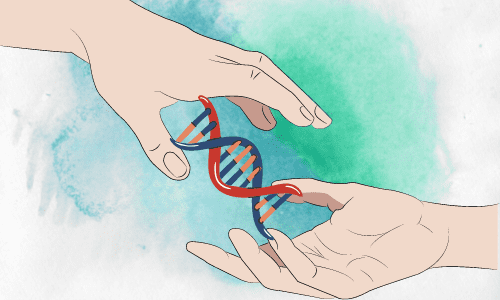Just as the soldiers guard the borders of a country and keep us safe from invaders, our immune system guards us from pathogens. Pathogens comprise a broad range of bacteria, viruses, fungi, and parasites. They cause a variety of grave diseases. When we cut our finger, certain pathogens, which wait for this opportunity, try their best to invade our body, but our immune system comprising heroic cells doesn’t allow these pathogens to win.
The immune system comprises specific organs and cells to make this possible, such as :
- Specialized organs – such as the spleen, bone marrow, thymus gland, the lymphatic system.
- Immune cells comprise the white blood cells (WBC), dendritic cells, macrophages, B cells, T cells and other cells.
- Signaling molecules.
The immune system comprises 3 lines of defense. The first is the physical barrier, including the skin and the mucous membrane. If this fails, then the pathogen encounters the innate immune cells and the complement proteins in the blood. Failure of the first and second lines of defense activates adaptive immunity, comprising B and T cells. Antigens are foreign molecules or toxins such as bacteria, virus or pollen that are recognized as a threat to our immune system. It calls for the production of antibodies to eliminate antigens from our body. Dendritic cells interact with a cell called the antigen-presenting cells that present these pathogens as antigen to the T cells to bring about the killing of the pathogen. B cells, called the plasma cells, lead to the production of antibodies. The antibodies bind to the antigen and neutralize it.

The immune cells are first produced by the bone marrow and then they reach their respective maturation sites. Just as the soldiers have to undergo grueling training in order to become capable of protecting the nation even in extreme situations, the B & T cells have to undergo similar training before they become mature and enter the battlefield.
The site of maturation for the B cells is the lymph nodes and for the T cells, it is the thymus gland. Here, they change from a premature cell to a mature cell. The training they receive is to differentiate between a self cell and a foreign cell. If any immature T or B cell recognizes a self cell as foreign, it’s destroyed or changed. Only after these cells learn these crucial identification criteria, they go into circulation on encounter with a foreign antigen. We know this process as immune tolerance. If this checkpoint fails, then there are other checkpoints that help to maintain tolerance.
Normally, there are some antibodies and T cells which are directed against self cells (auto antigen). The cells that recognize the autoantigen are called autoantibodies and they are not potentially harmful until they cause functional damage to the organ or tissue. But when the immune system mistakenly starts attacking its own body as it cannot differentiate between the self cells and foreign cells, it gives rise to autoimmune diseases (AD). Here, all the checkpoints for immune tolerance fail and the T and B cells turn rogue and start attacking self cells.
Autoimmunity is a chronic condition that requires several years to develop before we observe them as a discernible symptom. A variety of genetic and environmental influences, such as exposure to infections, drugs, vaccines, chemicals, and stress, may contribute to the loss of immune tolerance and cause AD.

We can categorize autoimmune diseases into two groups: organ specific and systemic. Organ specific autoimmunity targets a particular organ. For example, type 1 diabetes targets the beta cells of the pancreas. Systemic autoimmunity implies that the autoantibodies target any cell found in the body, as in rheumatoid arthritis (RA). In RA, mostly the joints are affected but the eyes, lungs and heart can also be damaged. There are over 100 types of autoimmune diseases affecting various parts and functions of the body.
The prevalence of autoimmune diseases is more in women compared to men. X chromosomes carry more immune related and regulatory genes which promote stronger immune responses and hence females can recover from infections faster than men. Hormonal changes and X chromosome related immune genes also increase the chances of mutations, increasing the possibility of autoimmune diseases in women.
Recent research has also pointed out that gut microbiota may also have a role in autoimmune diseases. For instance, an imbalance of the gut microbiomes and impaired intestinal barrier lead to the development and amplification of autoimmunity.
It is a common myth that autoimmune diseases manifest as symptoms later in life, but it can affect individuals at any age. Autoimmune diseases are inheritable if a person in the family suffers from it. Autoimmune diseases aren’t preventable, but are controllable if we make an early diagnosis. It helps to ease suffering. There has been no proven complete treatment for autoimmunity, but certain steroids and immune suppressing drugs can help reduce disease severity.
References:
- Smith, D. A., & Germolec, D. R. (1999). Introduction to Immunology and Autoimmunity. Environmental Health Perspectives, 107, 661. https://doi.org/10.2307/3434323
- Angum, F., Khan, T., Kaler, J., Siddiqui, L., & Hussain, A. (2020). The Prevalence of Autoimmune Disorders in Women: A Narrative Review. Cureus. https://doi.org/10.7759/cureus.8094
- Dodds, W. J. (2016). Gender affects immune responses to viruses and vaccines. Global Vaccines and Immunology, 2(1). https://doi.org/10.15761/gvi.2000121
- Xu, H., Liu, M., Cao, J., Li, X., Fan, D., Xia, Y., Lu, X., Li, J., Ju, D., & Zhao, H. (2019). The Dynamic Interplay between the Gut Microbiota and Autoimmune Diseases. Journal of Immunology Research, 2019, 1–14. https://doi.org/10.1155/2019/7546047
. . .
Writer
Chitrika Salian
Illustrator
Anushree Joshi
Editor
Namrata Pandit

